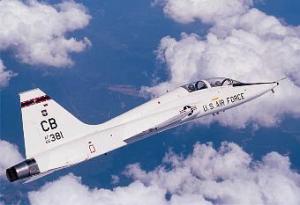
An university colleague asked me, “What’s it like to be an airline captain?”
I tried to deflect. “Well, it’s probably not what you’d think.”
Still, he deserved an answer, but probably not for the reason you’d think. Academia and aviation couldn’t be more different, and I owed him an answer for exactly that reason: academia welcomed me, shared generously, helped me attain their highest degree and let me teach on their college campuses.

By contrast, the pilot world is largely closed, both professionally and intellectually. When a pilot asks me about my doctoral dissertation, I usually lose them at my research hypothesis. So, I typically deflect that question with, “It’s hard to explain,” even though it’s really not.
Some pilots “are” captains, but that’s mostly fluff. They’re the ones who cling to social media names like “Captain [insert first name]” or worse, “Cap’n” anything. I suspect they’re the ones who used to go by nicknames like “Flyer Guy” and have vanity plates like “IFLY” or “AV8R.” I even know one guy whose wife refers to him in conversation as “Captain _____.” Big hat, no cattle, as far as I’m concerned.

Because for me, “captain” was never so much something to “be” as to actually do. When I have the title, it’s only at work and it translates to “the buck stops here” or in more accurate terms, “I accept full responsibility for everything that happens from push-back to block in.” And I’m not solo, because there is a century of aviation history that put me where I am .
Commercial aviation is a communal effort and an aggregate learning curve. In the United States, Canada, Great Britain, Europe, much of Asia, Australia and New Zealand, there’s been a lifetime of hard lessons, trial and costly error, engineering breakthroughs and thorough oversight. That’s been a costly but profitable flight evolution that is responsible for the safe air travel we all enjoy today.

When I’m the captain, I’m both the beneficiary and the trustee of that collective aviation experience, engineering, oversight and regulation. That’s what it’s like, if you really want to know: I’m the guy saying slow down when everyone else is saying “let’s hurry up;” I’m the one paid to look four hundred miles ahead when everyone else is looking around us now; I’m the one focused on now when everyone else if four states down the road.
I’m looking for “no” when everyone else says “yes;” I’m saying stop when everyone else says go. The easiest thing in the world is to just let things happen, but the more important responsibility is in making them go exactly as they should–or not at all.
That has little to do with vanity plates, forced “cap’n” nicknames, or even titles, which I leave at the airport when I go home, because I’m done “being” captain till it’s actually time to do it all again. And not until.
So maybe that’s not what you’d think being a captain was like, but now you can see that the real substance is in action, responsibility and accountability rather than in the title.

The buck stops here.
That’s why in over 26 years as a captain at the world’s largest airline, you’ve never heard me say on the PA, “This is your captain.” Besides the fact that I have a name, “captain” isn’t who I am, it’s what I do, a charge I readily accept. I’m a trustee of all that has gone before me in aviation, engineering, regulation and oversight. A good day as a captain is one where you’ve seen to every detail, taken care of every requirement, and, as we say, “haven’t bent any metal.”
That’s the reality of “what it’s like to be an airline captain,” and that won’t fit on a vanity plate. Nor does it need to.
___________________________________________________________
Get the insider flight crew view:

Over a hundred pages of original, wicked, unapologetic air travel cartoons.
Be an airline insider. Get yours from Amazon Books for $7.99.
Just click HERE.






 Because when it is, the sky is mute but bears the passage anyway, indifferent: coming back? Gone forever, though you thought not.
Because when it is, the sky is mute but bears the passage anyway, indifferent: coming back? Gone forever, though you thought not.



























